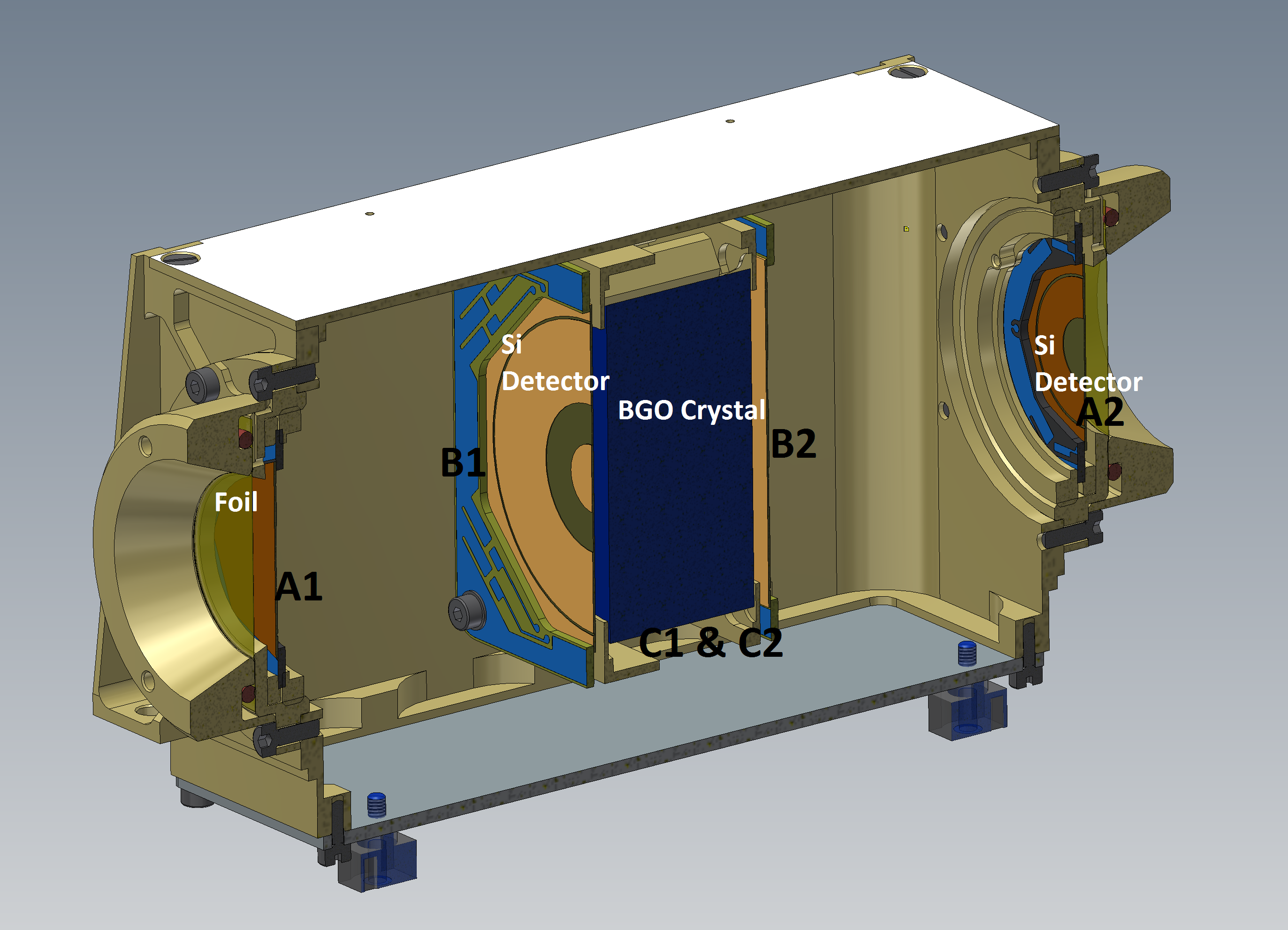
The High-Energy Telescope (HET) measures electrons, protons, and heavy ions at the upper energy range of EPD, from a few to hundreds of MeV/nuc. In particular, it will cover energies that are of specific interest for studies of the space environment (space weather) and will perform the measurements needed to understand the origin of high-energy events at the Sun which occasionally accelerate particles to such high energies that they can penetrate the atmosphere of the Earth causing a GLE. In addition HET isotopic separation allows to determine helium isotopes down to a He3/He4 isotope ratio of about 1%.
HET consists of a double-sided telescope head and an electronics box which is shared with EPT. There are two EPT/HET units on the spacecraft, one located on the -y-deck pointing sun/anti-sunward along the average Parker spiral, and the other located on the +y-deck pointing out of the ecliptic. Thus, HET has a total of four viewing directions due to its fully symmetric design. HET consists of four silicon solid state detectors (SSDs) and one high density scintillation crystal. The HET entrance collimator is protected by a Kapton foil covered with a thick aluminum coating that reduces the low-energy particle flux on the front detectors. In the figure, A1 and A2 are front/back SSDs with two segments each. B1 and B2 are middle SSDs with three segments each. The scintillation detector, C, used in HET is a BGO crystal which is read out by two Hamamatsu photodiodes.